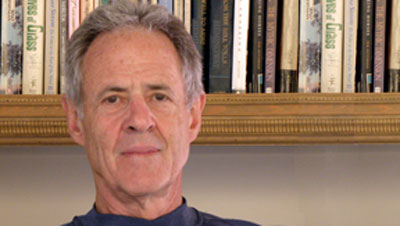Wiliam Glassley to visit Aarhus

Our collaborator, William Glassley from University of California at Davis, will be visiting the ESP group and the Geoscience Department. Dr. Glassley's primary interests are in metamorphic processes, fluid/rock interaction and continental growth. His research involves combining detailed field studies of rock features and structural data with whole rock and mineral geochemistry, microstructural studies, petrography and geochronology, to resolve the details of processes that affect crustal evolution. He is also interested in using these same methods to understand the nature and evolution of geothermal systems. Glassley's current research efforts focus on the evolution of deep continental crust in West Greenland, as well as geothermal systems in California, New Mexico and other parts of the world.
During his stay here, Dr. Glassley will present his work on ultra-high pressure metamorphism in west Greenland to the ESP group. He will also present a department seminar on geothermal energy research in California, USA.
The Significance of Ultra-High Pressure Metamorphism in West Greenland and the First Terrestrial Occurrence of Ahrensite
8 May 2017, 11:15 - 12 in 1673-118
A record of ultra-high pressure metamorphism is preserved in a few samples of unusual bulk composition in the western end of the Nagssugtoqidian Shear Zone in West Greenland. These rocks occur within a well-defined belt that has mélange characteristics, including tectonic mixes of lithologies expected in a subduction zone. In this presentation I will discuss the mineralogical, textural and lithologic features associated with this UHP complex. Included in this discussion will be a description of relict features that point to the prior co-existence of ahrensite and fayalite. The significance of this unique UHP region, the ahrensite-fayalite association and the implications for Paleoproterozoic tectonics will be explored.
Geothermal energy research in California, USA
8 May 2017, 13 - 14 in 1671-137
California is one of the main producers of geothermal energy in the world, with an installed capacity of nearly 3,000 MW, and potential for an additional 10,000 MW of conventional and up to 60,000 MW enhanced geothermal power generation. But a variety of motivators are encouraging consideration of unconventional geothermal resources. This presentation will describe research directions currently being pursued, including:
1. Co-produced fluids from oil and gas fields for direct applications and power generation – millions of barrels of 54oC co-produced water from oil and gas wells is currently re- injected daily in the Los Angeles Basin. Strategies for utilizing these and higher temperature waters are being evaluated.
2. Better methods for locating and assessing geothermal resources – Sonoma County is undertaking an analysis of the location and magnitude of geothermal resources that feed springs utilized in spas. This analysis is making use of new simulation and modeling techniques that provide more robust assessments and risk determination. The results will allow better resource characterization, description of the relationship to the local hydrology, how to manage future uses of low-temperature resources so as to avoid impacts on existing uses and water availability.
3. Hybrid uses – consideration is being given to technologies that could combine with geothermal to provide more flexible uses. Potential hybrid combinations involve solar, thermal storage, geothermal-desalination, and flexible generation.
